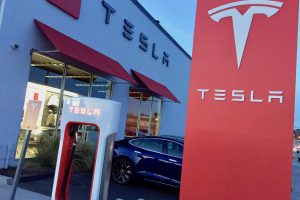- 📉 DoubleVerify apologizes to Elon Musk’s social media platform, X, for misreporting brand safety data.
- 🔍 DoubleVerify acknowledges a graphical error in X’s Brand Safety Rate on its Pinnacle dashboard.
- 📅 The error persisted from October 24, 2023, to March 14, 2024, affecting advertisers who relied on the inaccurate data.
- 💼 DoubleVerify CEO Mark Zagorski takes responsibility for the error and assures corrective measures have been taken.
- 📈 X’s actual Brand Safety Rate exceeds 99%, according to both DoubleVerify and Integral Ad Science.
In the fast-paced world of digital advertising, ensuring brand safety is paramount for both advertisers and platforms. Recent events involving DoubleVerify’s apology to Elon Musk’s social media platform, X, shed light on the complexities and challenges of maintaining accurate brand safety metrics. Let’s delve into the details and explore the implications of this apology for the broader digital advertising ecosystem.
Understanding the Apology: A Graphical Error and Its Impact
DoubleVerify, a prominent brand safety measurement firm, issued an apology to X for misreporting brand safety data. The apology stems from a graphical error in X’s Brand Safety Rate on DoubleVerify’s Pinnacle dashboard. This error persisted for almost five months, from October 24, 2023, to March 14, 2024, significantly affecting advertisers who relied on this inaccurate data for campaign planning and optimization.
The Significance of Brand Safety in Digital Advertising
Brand safety refers to the measures taken by advertisers and platforms to ensure that ads are displayed alongside content that aligns with the brand’s values and objectives. In an era marked by fake news, misinformation, and controversial content, maintaining brand safety is essential to safeguarding brand reputation and maintaining consumer trust.
Taking Responsibility and Assuring Corrective Measures
DoubleVerify CEO Mark Zagorski took responsibility for the error and assured stakeholders that corrective measures have been implemented. Acknowledging mistakes and taking proactive steps to rectify them is crucial for building and maintaining trust in the digital advertising ecosystem. However, this incident also highlights the importance of robust quality assurance processes and rigorous testing protocols to prevent similar errors in the future.
The Role of Third-Party Verification in Ensuring Transparency
Third-party verification firms like DoubleVerify and Integral Ad Science play a critical role in providing advertisers with independent metrics to assess brand safety and ad performance. As advertisers increasingly demand transparency and accountability in digital advertising, the role of third-party verification becomes even more significant. However, incidents like the misreporting of brand safety data underscore the need for continuous monitoring and validation of these metrics.
Implications for Advertisers and Platform Owners
For advertisers, this incident serves as a reminder of the importance of diversifying sources of data and conducting thorough due diligence when evaluating brand safety metrics. Relying solely on a single measurement provider may expose advertisers to the risk of inaccurate or misleading data, potentially impacting campaign performance and ROI.
Platform owners, on the other hand, must prioritize transparency and accountability in their relationships with advertisers and third-party verification firms. Building and maintaining trust with advertisers is essential for fostering long-term partnerships and driving revenue growth.
Conclusion: Navigating the Complexities of Brand Safety
The apology from DoubleVerify to X underscores the complexities and challenges of ensuring brand safety in the digital advertising landscape. While incidents like these are unfortunate, they also present valuable learning opportunities for advertisers, platform owners, and verification firms alike. By prioritizing transparency, accountability, and continuous improvement, stakeholders can collectively work towards building a safer and more trustworthy digital advertising ecosystem.





